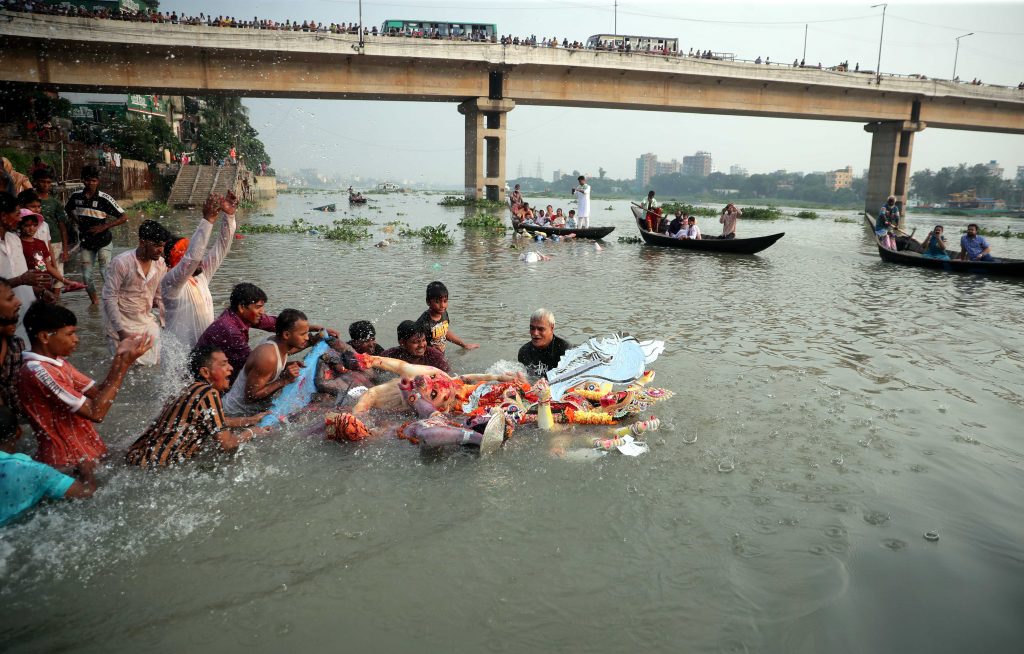On the edge of Dhaka, the capital of Bangladesh, flows the Buriganga—a river steeped in centuries of history, trade, and survival. It is not just water moving between its banks; it is memory, heritage, and the breath of millions who have built their lives along its shores. Generations have looked to this river as a source of livelihood, as a passageway between places, as a silent witness to both the glories and sorrows of a growing city.
Even today, amid the pulse of modern Dhaka, the Buriganga remains alive. During monsoon, its heavy black waters soften into a pale, silvery gray, as if the river itself is trying to recall its lost beauty. One might imagine a poet, lost in thought, sitting by its bank and finding inspiration in its quiet resilience. Or a weary traveler watching the ripples and letting the river’s rhythm soothe a tired soul. Boats still cross from one side to the other—dinghies carrying passengers, steamers and ships carrying goods, all part of an endless flow of human activity. The river is a living artery of the nation, sustaining the humble trades and countless lives that rise around it.
Yet the Buriganga is also a river in pain. The weight of human neglect has left it scarred—its waters darkened by pollution, its breath heavy with industrial waste. Factories pour chemicals into its veins, turning life-giving water into poison. The stench rises, the fish die, and the river loses its depth, its strength, its ancient dignity. It is as though the Buriganga itself cries out, asking to be saved.
And still, there is hope. A river does not die easily. It waits for human kindness, for the collective will to restore what has been lost. If people choose, the Buriganga can yet flow with life and beauty again. To see it is to feel both sorrow and inspiration: sorrow for what we have done, and inspiration to imagine what it could still become.
The Buriganga is not just a river; it is a reflection of human choices, a reminder of the responsibility of Dhaka’s people, and a silent plea for renewal.
//
Pic-1 : On the dark waters of the Buriganga, a boatman steers his vessel with quiet determination. This river is more than just water—it’s his livelihood, his daily struggle, and his sustenance. Amid the murky currents, life goes on, one oar at a time.
Pic-2 : Even today, many rely on boats for simple, daily travel. In this image, a boat cuts through the heart of the river, carrying its passengers across the flowing waters. Life along the Buriganga continues, carried forward by these timeless vessels.
Pic-3 : Every day, countless launches ferry passengers across the Buriganga, connecting one shore to another. In this image, two launches glide along the river, serving as lifelines for daily commuters. The river remains a bustling artery of the city’s transport and life.
Pic-4 : Plastic bottles discarded into the river by people add to the growing pollution of the Buriganga. Here, children and teenagers collect these bottles from the river’s surface, turning waste into a small source of income by selling them to factories. Amidst the challenges, their efforts reflect resilience and resourcefulness in the face of environmental neglect.
Pic-5 : Goods are being transported on a large boat, a practice that has endured for generations. Traders have long relied on the river for its cost-effectiveness and ease of travel. The Buriganga continues to be a vital artery for commerce, linking livelihoods and trade across its waters.
Pic-6 : Due to stormy weather, the passenger-packed boats remain docked, leaving workers and travelers idling along the riverbank. Time slows down as the river waits out the storm. Even in pause, the life of the Buriganga quietly persists, bridging work and leisure.
Pic-7 : Sudden rain pours over the Buriganga, and the idle boats glisten as droplets wash away layers of dust. The river comes alive under the rainfall, turning mundane moments into a quiet spectacle. Even at rest, the boats seem to shine, refreshed by nature’s touch.
Pic-8 : Amid the murky waters of the Buriganga, a group of children bathes with carefree joy. Their laughter ripples across the river, as if even the water shares in their delight. In these simple moments, innocence finds a way to shine through the grime.
Pic-9 : In preparation for one of the major Muslim festivals, cattle are being brought from across the country to Dhaka and surrounding areas for sale. The markets bustle with activity as farmers and traders converge, connecting rural livelihoods with urban demand. The air is filled with anticipation, marking the festive spirit of sacrifice and tradition.
Pic-10 : During one of the major Hindu festivals, Durga idols are being immersed in the Buriganga. Devotees gather to bid farewell to the goddess, marking the conclusion of the celebrations. The river bears witness to faith, tradition, and the vibrant spirit of the community.
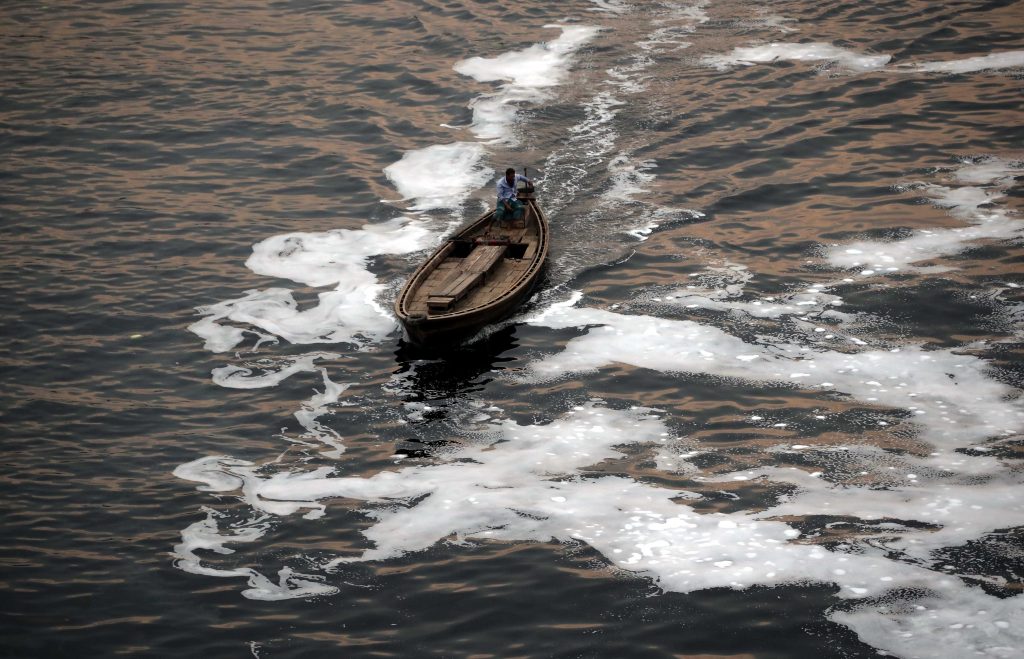
Livelihood
On the dark waters of the Buriganga a boatman steers his vessel with quiet determination This river is more than just water it s his livelihood his daily struggle and his sustenance Amid the murky currents life goes on one oar at a time
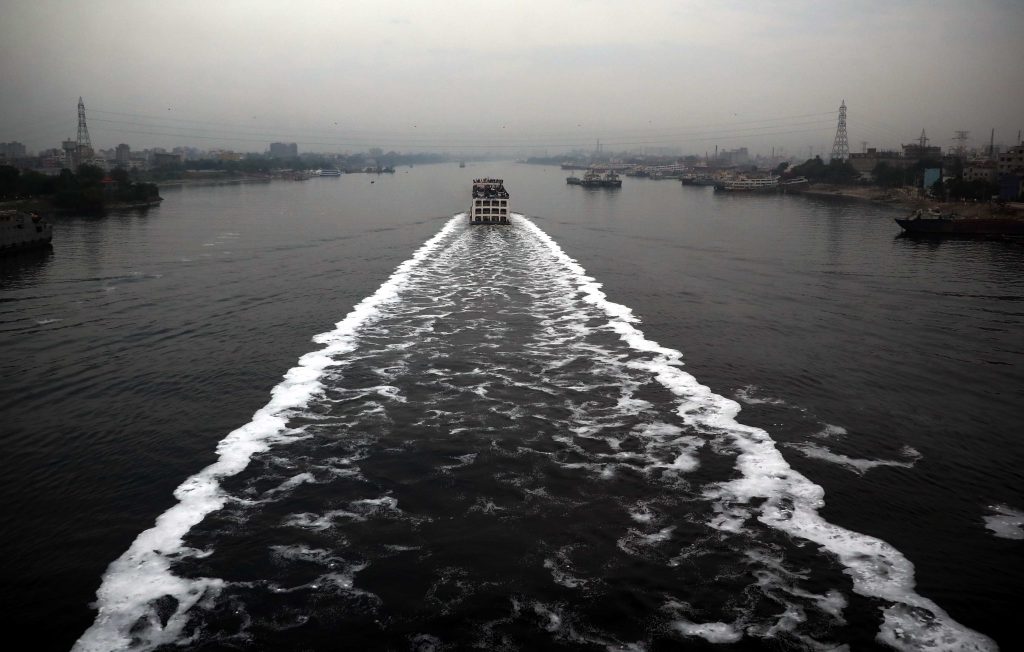
Life goes on.
Even today many rely on boats for simple daily travel In this image a boat cuts through the heart of the river carrying its passengers across the flowing waters Life along the Buriganga continues carried forward by these timeless vessels
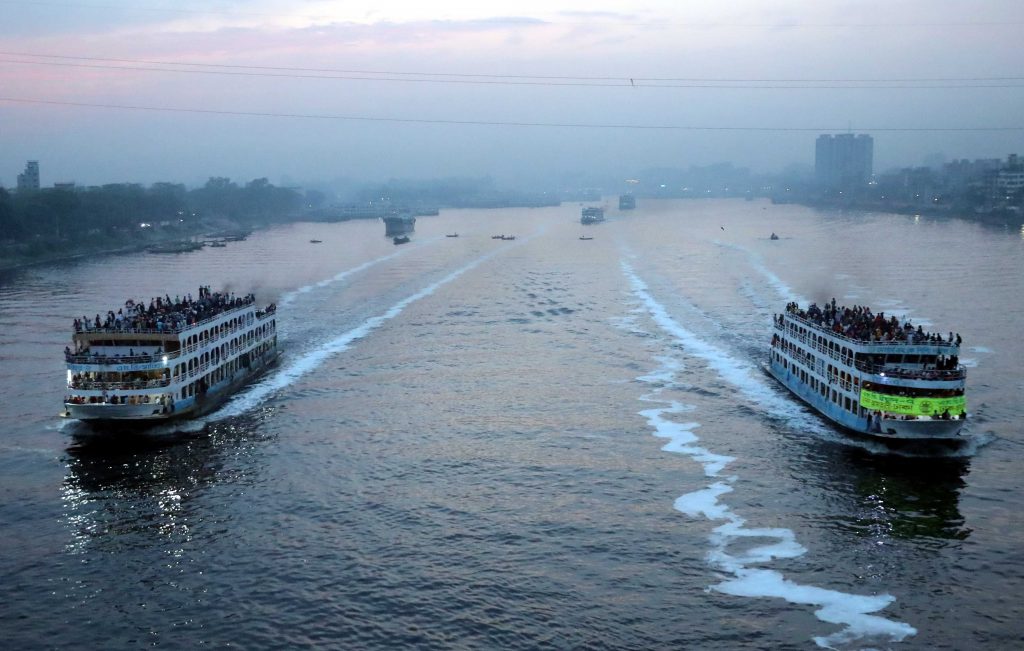
Daily life journey
Every day countless launches ferry passengers across the Buriganga connecting one shore to another In this image two launches glide along the river serving as lifelines for daily commuters The river remains a bustling artery of the city s transport and life
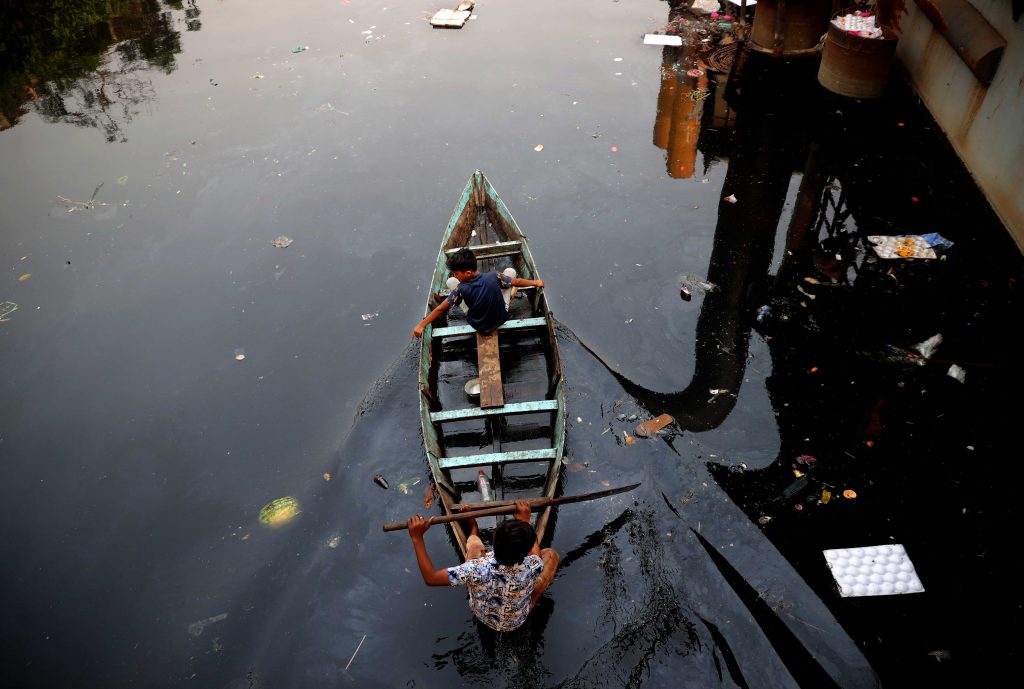
collection
Plastic bottles discarded into the river by people add to the growing pollution of the Buriganga Here children and teenagers collect these bottles from the river s surface turning waste into a small source of income by selling them to factories Amidst the challenges their efforts reflect resilience and resourcefulness in the face of environmental neglect
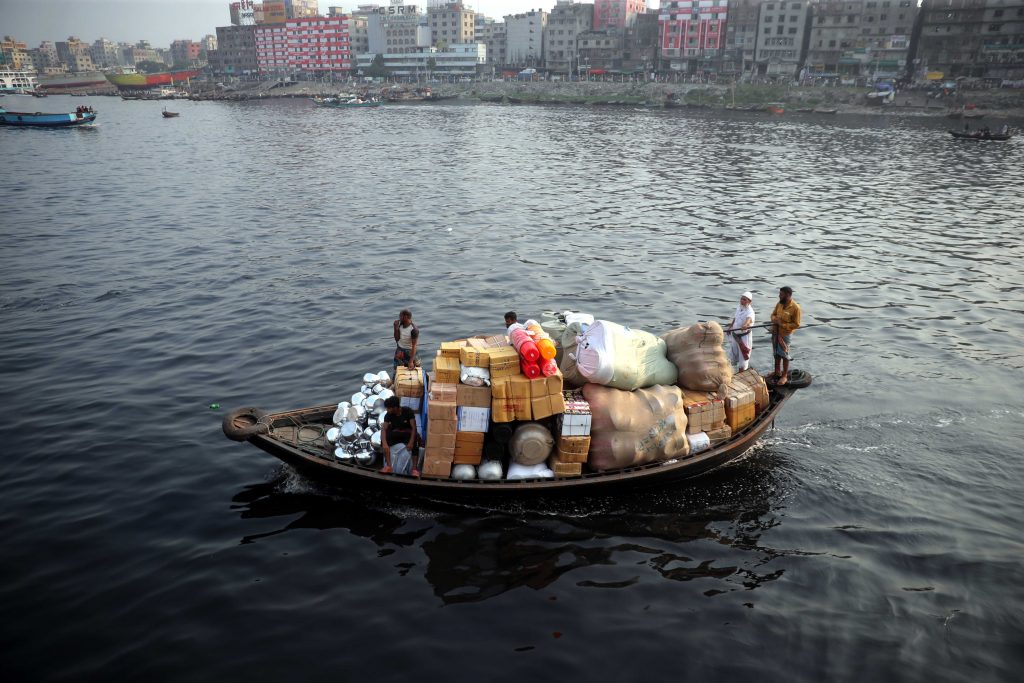
Transport of goods
Goods are being transported on a large boat a practice that has endured for generations Traders have long relied on the river for its cost-effectiveness and ease of travel The Buriganga continues to be a vital artery for commerce linking livelihoods and trade across its waters
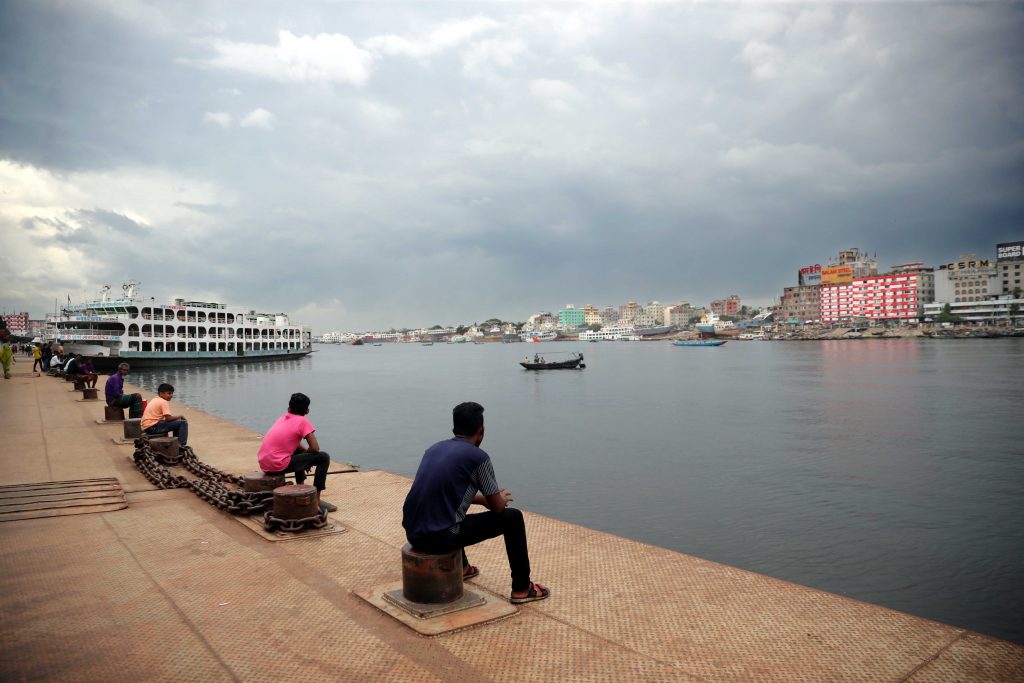
Break
Due to stormy weather the passenger-packed boats remain docked leaving workers and travelers idling along the riverbank Time slows down as the river waits out the storm Even in pause the life of the Buriganga quietly persists bridging work and leisure
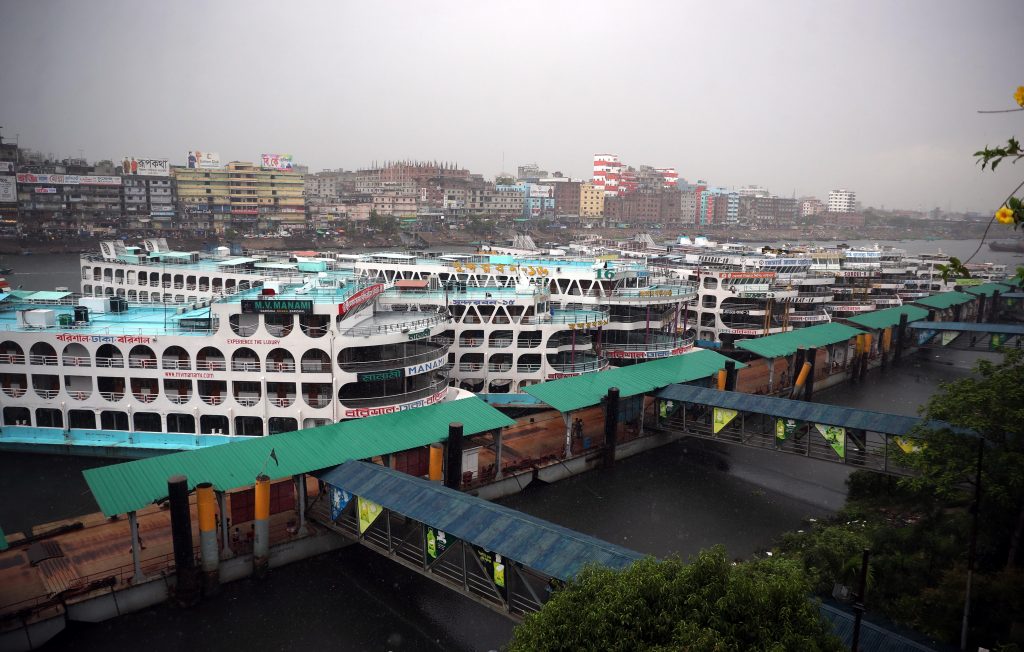
Idle time
Sudden rain pours over the Buriganga and the idle boats glisten as droplets wash away layers of dust The river comes alive under the rainfall turning mundane moments into a quiet spectacle Even at rest the boats seem to shine refreshed by nature s touch
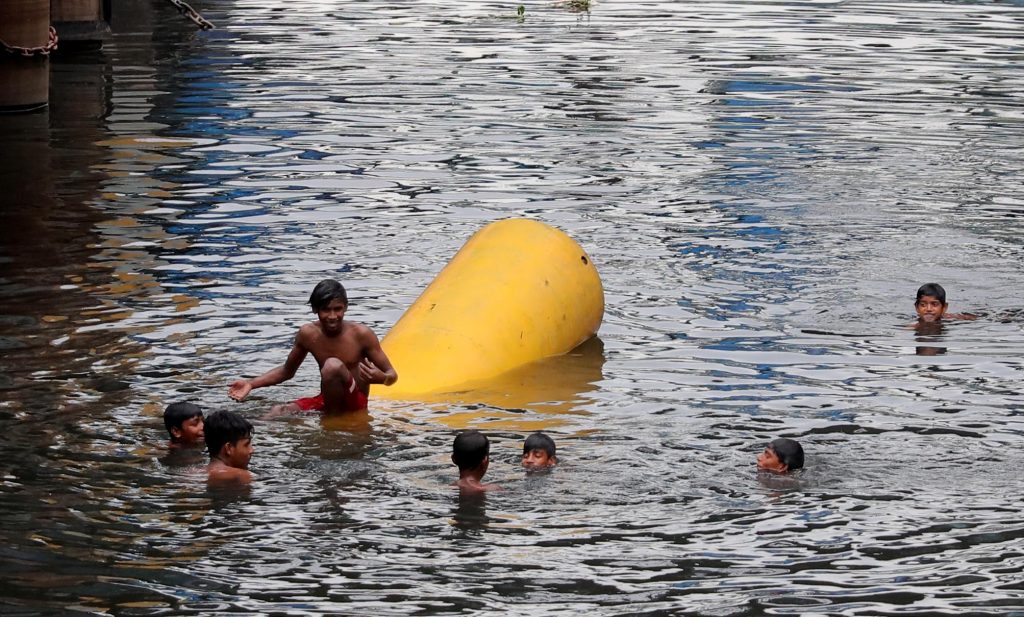
Bathing in the River
Amid the murky waters of the Buriganga a group of children bathes with carefree joy Their laughter ripples across the river as if even the water shares in their delight In these simple moments innocence finds a way to shine through the grime
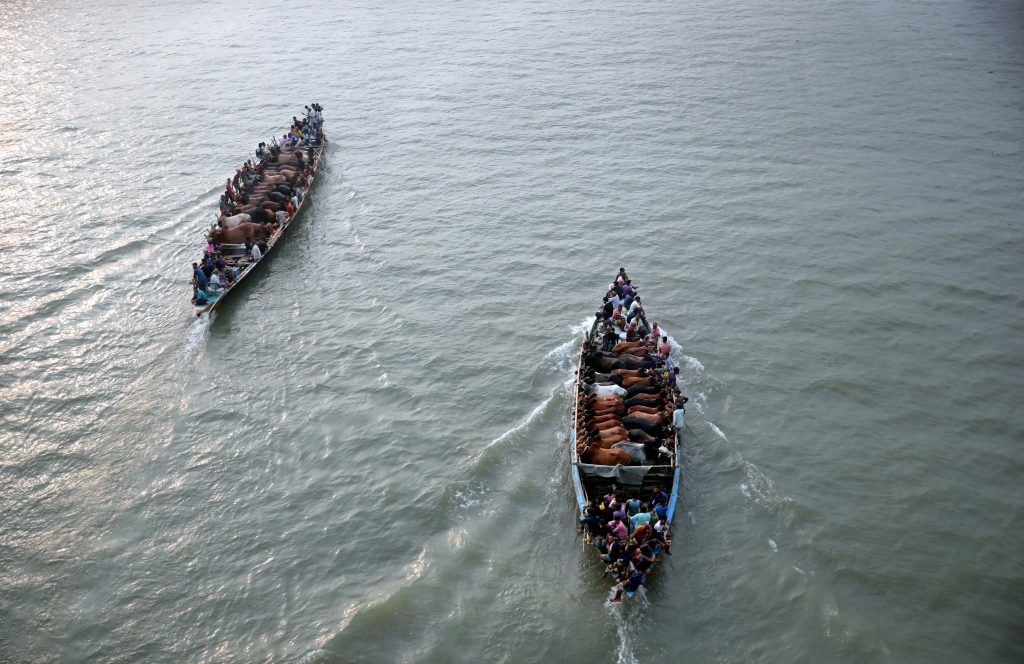
Journey with cows
In preparation for one of the major Muslim festivals cattle are being brought from across the country to Dhaka and surrounding areas for sale The markets bustle with activity as farmers and traders converge connecting rural livelihoods with urban demand The air is filled with anticipation marking the festive spirit of sacrifice and tradition
